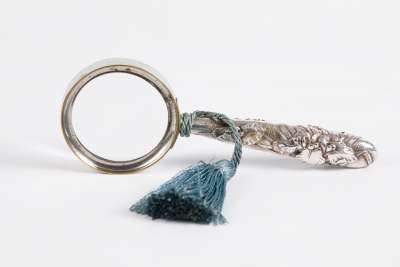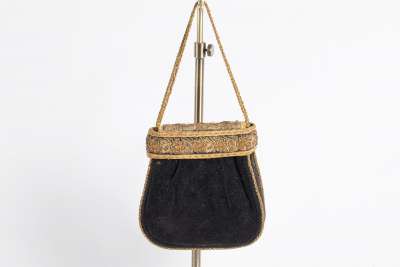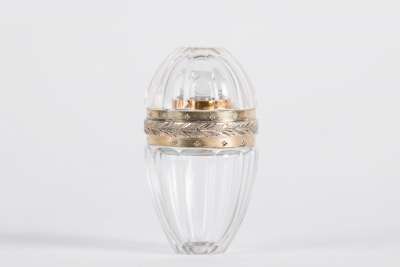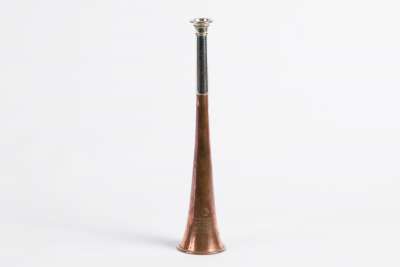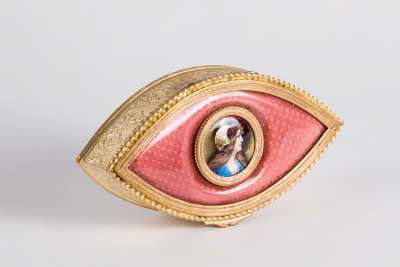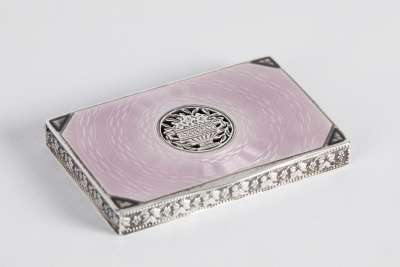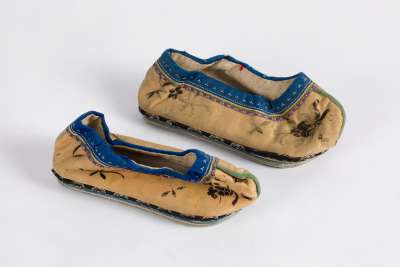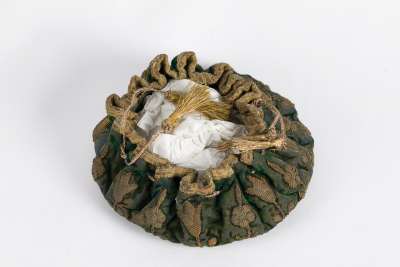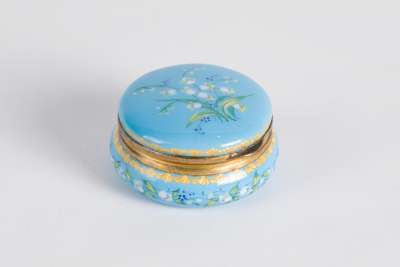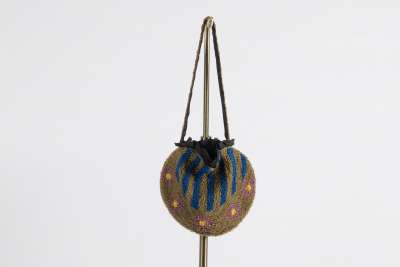This Japanese Meiji period ivory okimono dates to circa 1900 and is a remarkable representation of craftsmanship from this era. It depicts a finely detailed, partially peeled banana, showcasing the skill involved in carving such a lifelike piece. The carving reveals the inner flesh of the banana, encapsulated by the delicately folded skin, which has been stained a pale yellow to amplify its realism. This item, characteristic of the Meiji period, reflects both Japanese artistic traditions and their adaptation to Western influences in ornamental art. The okimono serves not only as a decorative piece but also as a testament to the rich cultural exchanges taking place during this historical period in Japan.
Condition Report
The okimono is in good condition, exhibiting no visible cracks or repairs. The ivory has aged gracefully over the years, maintaining its original patina that reflects its history. The pale yellow staining applied to the skin of the banana is intact, further enhancing its realistic representation. Collectors will appreciate the item's well-preserved state, indicative of careful handling and storage over time.
Dimensions
Weight: 90 grams; Length: 13 cm; Width: 3 cm; Height: 2.5 cm.
A Decorative Object for Placement
Okimono, derived from the Japanese term meaning "object for placement," were traditionally used as decorative elements displayed in the tokonoma, an alcove found in Japanese homes. Unlike netsuke, which had practical applications, okimono were purely ornamental, designed to reflect the aesthetic values of the Meiji era. This particular piece illustrates the era's trend towards representing everyday objects, fostering a connection between the object and its cultural context.
A Fine Example of Meiji Craftsmanship
This okimono is a testament to the Meiji era's style, where artists were deeply influenced by both traditional Japanese techniques and Western artistic ideals. The trompe-l'œil style, which sought to create hyper-realistic representations, became a hallmark in depicting fruit and everyday items. The intricate detailing in the carving of the banana demonstrates the high level of skill and precision that artisans employed, characteristics that are strongly associated with Meiji craftsmanship.
The Art of Ivory Carving
The creation of this okimono involved meticulous carving techniques, utilising ivory as the primary material. Artisans of the Meiji period employed both traditional methods and innovative approaches to achieve lifelike forms. The carving process required not only an understanding of the material but also a keen eye for detail, as the contours and textures must accurately reflect the subject matter. The incorporation of techniques for staining the ivory further heightened the realism of such pieces, marking a significant achievement in decorative arts.
Maker of the Unknown Artisan
This okimono remains unsigned, and thus, the specific maker is unknown. However, it is comparable to similar pieces from the period, such as an ivory banana in the British Museum's collection, which is dated to the same era. These works were typically produced by skilled artisans who crafted items intended for both local appreciation and international markets, showcasing the high standards of artistry prevalent during the Meiji period.
Collected by Enthusiasts of Japanese Art
The collection of Meiji-era ivory okimono has attracted numerous enthusiasts of Japanese art, valued for their intricate craftsmanship and cultural relevance. Collectors are drawn to these works not only for their aesthetic appeal but also for their historical significance, as they encapsulate a unique blend of tradition and modernity. Items such as this banana have found a place in esteemed collections, underscoring their importance in the broader narrative of art collection and appreciation.



